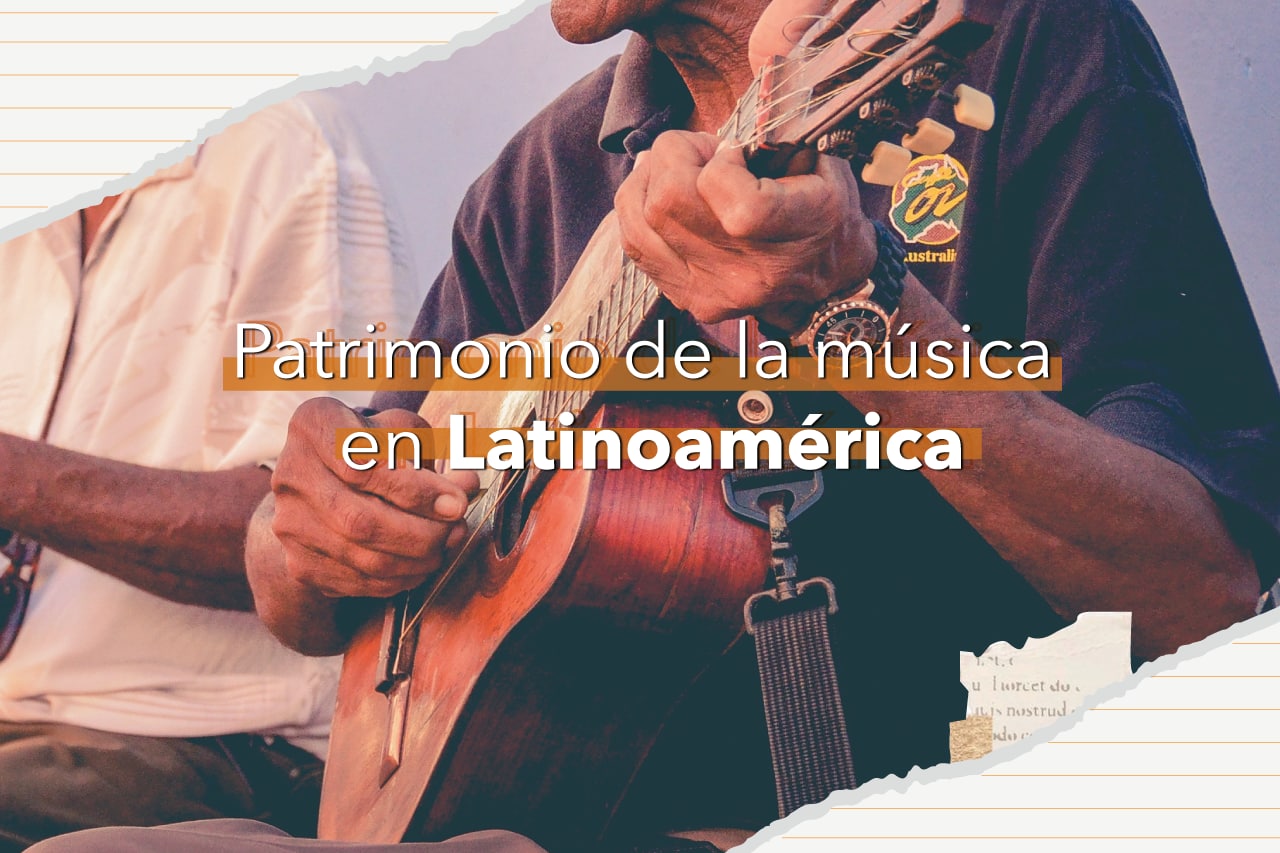By Alejandra Arévalo Giraldo
You are at the club and a characteristic song from your country plays, it could be the unmistakable sound of the accordion accompanied by voices that seem like screams and you go back to those festive moments at your grandmother's or your uncle's house where they played an old vallenato and like that Even if you knew the song, you would still try to sing it at the top of your lungs. Loved by many and not loved by others, vallenato, which means "born in the valley" as it originates from the city of Valledupar, is a musical genre indigenous to the Caribbean Region of Colombia, which was declared in 2015 by the UNESCO, as intangible cultural heritage. According to the organization, this genre has a profound role in building social ties and plays an essential role in the creation of a common regional identity. Just like this one, there are other musical rhythms from Latin America that are inscribed in the Representative List of the Intangible Cultural Heritage of Humanity, such as tango in Argentina, which also has a characteristic role of personification and encourages both cultural diversity and dialogue. . This originates from the cultural fusion of Afro-River Plate communities, with the gaucho, indigenous, Hispanic, African, Italian culture and the ethnic diversity of the great wave of immigration arriving mainly from Europe. There is also the scissors dance in Peru, in which the dancer's acrobatics using scissors stand out, imaginarily generating the dancer's role as a mediator with the land and the inhabitants. Likewise, in the state of Michoacán, Mexico we can find the pirekua, a traditional song of the Purépecha indigenous communities, characterized by its diverse rhythms and the mixture of African, European and Amerindian influences.
Okay. Perhaps with some of these examples we imagine the dancers with their colorful clothing, native sounds and typical dances... the kind that one danced in school performances. And to introduce this whole folklore topic, it is necessary to highlight that from one country to another there is a great diversity of processes and institutions in charge of the heritage of these musical genres, such as the CRESPIAL of UNESCO (Regional Center for the Safeguarding of Heritage Intangible Cultural for Latin America), created in Peru, which carried out a study showing, in a legislative framework, this constant paradigm of folklore and the vision of “the cultural”.
In addition to carrying out direct actions with the States, this center is currently working on three multinational safeguarding programs, focused on training and acquisition of communication skills, which cover three specific ethnic groups: the Aymaras, the Guaraníes and the Afro-descendants. The first, called the Multinational Project “Safeguarding the Intangible Cultural Heritage of the Aymara Communities of Bolivia, Chile and Peru”, where research was carried out on music, oral tradition and knowledge based on the cultural expressions of the Aymara population located in the three countries. The second multinational project, “Safeguarding the Guaraní Cultural Universe,” managed to articulate five countries (Argentina, Bolivia, Brazil, Paraguay and Uruguay), demonstrating the importance of creating and applying safeguard policies that must be agreed upon between Guaraní communities and organizations. . And finally, the most advanced project due to the results obtained in terms of creating musical records, dance and designing a state of the art, is the “Afro-descendant Cultural Universe”, in which thirteen Latin American countries participate and where its focus is the different contexts. and processes that the Afro-descendant population of those countries had gone through throughout history until today. (Bigenho, 2018)
According to Lacarrieu (2008), today we could have some considerations when talking about musical heritage in Latin America, taking into account first that in many of these cases put into practice, intangible heritage has as a reference or is focused on minorities and in In some cases, a process is created that accentuates social inequalities. Although it also has a view that is open to the possibility that patrimonialization can be part of a strategy in struggles for rights. On the other hand, we must consider that covering heritage and practices related to music are developed in an era where everything is visible through our cell phone screens and social networks, generating it not as something isolated but as part of events. cultural, festive or rituals where all those accompanying characteristics such as symbols, colors, costumes, movements, instruments, etc. are appreciated.
Likewise, within the topic of intangible heritage, we can also include the importance of sight in these scenarios since they automatically generate visual attention that becomes the center of attention (Bigenho and Stobart 2018).
Taking all this into account, the burden of what we know as cultural tradition plays an important role since many of the activities related to music not only come from generation to generation and are established in the popular imagination, but it also keeps alive the traditions, values and the preservation of the memory of the people. Without a doubt, no matter how much the songs are reformed, music as heritage, that which characterizes our origin, is the recognition of our identity as Latin Americans and that does not stop at musical instruments, typical dances, colorful costumes and objects. rare historical events, but in a set of sensations and experiences that constitute multicultural expressions.
Sources



